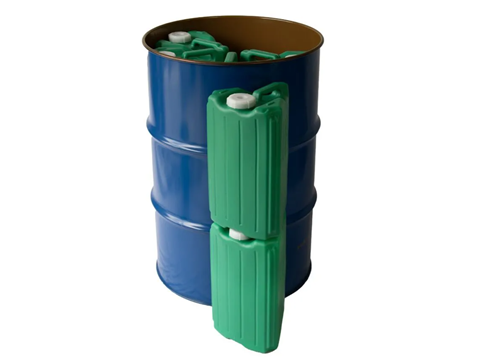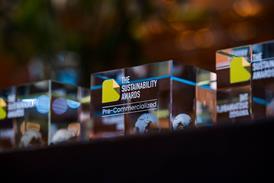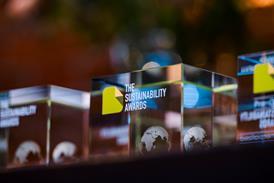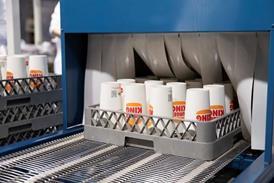
Greif’s triangular ModCan is designed to more than double space optimization inside a barrel or drum, intended for use in disposing of hazardous chemicals from laboratories.
In particular, the solution is intended for lab packs – i.e., specialized services run by hazardous waste management companies to handle and safely dispose of small quantities of acids, bases, solvents, reactive materials, and other substances with the potential to cause environmental or health-related damage if mishandled.
A standard 55-gallon barrel apparently offers around 36% space utilization and requires vermiculite to fill the gaps between jerrycans or carboys. The triangular shape and design of ModCan is intended to overcome this problem by facilitating 82% volume use inside a standard container.
By increasing the amount of space utilized, the solution is hoped to lessen the number of product shipments required and reduce waste management costs. Negating the need to fill empty space with vermiculite is also anticipated to save time and money.
ModCan’s lightweight design and ergonomic handles are set to reduce the physical strain on employees using conventional means of modular packaging. This is anticipated to prevent injuries and improving workplace safety during the handling stage, which is further increased by preventing the need to transfer waste from smaller containers into large drums.
The solution is compatible with any 55-gallon Greif drum made from steel, plastic, and fibre, aiming for compatibility with the needs of the manufacturing, laboratory, and pharmaceutical industries. Sizes of 1.75 and 3.75 gallons – as well as design modifications like angles to the neck and heel and a 70mm Plasticap thread finish – are available to meet the demands of end users.
Additionally, enhancing the use of resources and reducing waste is expected to help companies align with environmental regulations and meet internal sustainability and ESG goals.
ModCan is recommended for use by analytical, quality control, clinical, and academic laboratories. Specialty manufacturing, process operations, semiconductor manufacturing, and pharmaceutical production applications are also suggested.
The container design is reported to integrate seamlessly into existing workflows ’with proven efficacy and reliability’.
Other transport solutions unveiled this year include those from Twinplast. Back in March, it announced its collaboration with a leading honeybee supplier to transport live pollinators in bespoke corrugated polypropylene shipping boxes, designed to protect the bees while minimizing weight and transport costs.
Since then, it has unveiled a flame-retardant finish for its fluted sheets, intended to protect transport, warehouse, and industrial packaging applications against fire damage. The treatment is said to comprise halogen-free chemical additives, which increase fire resistance without posing environmental or health risks.
It was recently revealed that Greif would divest its containerboard business in a $1.8 billion all-cash transaction to Packaging Corporation of America; this includes its containerboard mills, sheet feeders, and corrugated plants.
If you liked this story, you might also enjoy:
The ultimate guide to the Packaging and Packaging Waste Regulation in 2025
How are the top brands progressing on packaging sustainability?
Everything you need to know about global packaging sustainability regulation in 2025
The key to increasing the use of reusable packaging in supermarkets
















No comments yet